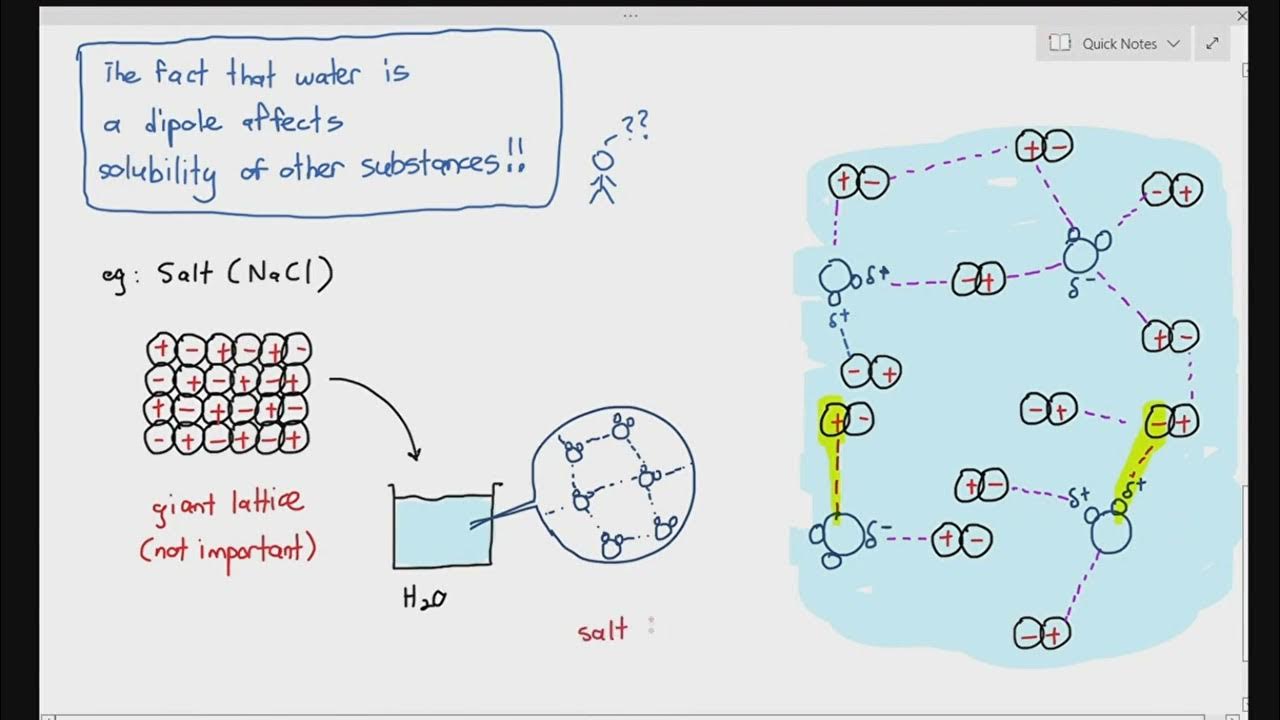Fats and oils food science lecture
Summary
TLDRThis video explains the importance of lipids, including fats and oils, which are water-insoluble molecules soluble in organic solvents. The script covers the five main classes of lipids: free fatty acids, triacylglycerols, phospholipids, glycolipids, and steroids. It highlights their structure and function, such as how fats serve as energy sources, provide insulation, and aid in the absorption of fat-soluble vitamins. The video also discusses the role of cholesterol in hormone production and cell membranes, and emphasizes lipids' diverse functions in the body, including in nerve insulation and as precursors for complex molecules like cholesterol.
Takeaways
- 😀 Lipids are water-insoluble molecules that are highly soluble in organic solvents, unlike other biomolecules.
- 😀 Lipids do not form polymers, unlike proteins, nucleic acids, and polysaccharides.
- 😀 Lipids are classified into five main types: free fatty acids, triacylglycerols, phospholipids, glycolipids, and steroids.
- 😀 Free fatty acids consist of a hydrocarbon chain with a carboxyl group at one end and a methyl group at the other.
- 😀 Triacylglycerols serve as the storage form of free fatty acids and are composed of three fatty acids and a glycerol molecule.
- 😀 Phospholipids have one fatty acid replaced by a phosphate group, making the phosphate head hydrophilic and the fatty acid tails hydrophobic.
- 😀 Cholesterol plays a crucial role in forming hormones like estradiol and testosterone and is a vital component of animal cell membranes.
- 😀 There are two major types of phospholipids: phosphoacylglycerols and sphingomyelins, differing in the R group identity in the phosphodiester bond.
- 😀 Fats are an ideal energy source due to their high energy density compared to carbohydrates and proteins, providing nine kilocalories per gram.
- 😀 Fats serve multiple functions such as energy storage, insulation, protection of vital organs, hormone synthesis, and supporting fat-soluble vitamin absorption.
Q & A
What are lipids and how do they differ from other biomolecules?
-Lipids are water-insoluble molecules that are highly soluble in organic solvents. Unlike other biomolecules, lipids do not form polymers.
How are lipids classified?
-Lipids are classified into five main classes: free fatty acids, triacylglycerols, phospholipids, glycolipids, and steroids.
What is the structure of free fatty acids?
-Free fatty acids are chains of hydrocarbons with a carboxyl group at one end and a methyl group at the other end. They vary in the number of carbon atoms and the saturation of the hydrocarbon chain.
What role do triacylglycerols play in the body?
-Triacylglycerols are the storage form of free fatty acids. They consist of three fatty acids combined with a glycerol molecule, serving as a primary energy reserve.
How are phospholipids different from triacylglycerols?
-In phospholipids, one fatty acid from a triacylglycerol molecule is replaced by a phosphate group. The phosphate group is hydrophilic, while the fatty acid tails are hydrophobic, making them essential for forming cell membranes.
What is the importance of cholesterol in the body?
-Cholesterol is crucial for forming hormones such as estradiol and testosterone. It also plays a key role as a membrane constituent in animal cells.
What are the two prominent types of phosphoacylglycerol?
-The two prominent types of phosphoacylglycerol are cephaline and lecithin. They differ in the identity of the R group in the phosphodiester bond.
What is the primary function of fats as an energy source?
-Fats serve as an ideal energy source because they have a high energy density compared to carbohydrates and proteins. One gram of fat generates 9 kilocalories of energy.
How do fats help in insulation and protection?
-Fats under the skin act as thermal insulators, protecting the body from cold temperatures. Additionally, fat around kidneys serves as padding to protect against injury.
Why are fats essential for fat-soluble vitamin absorption?
-Fats are necessary for the absorption of fat-soluble vitamins (A, D, E, and K) as they help transport these vitamins through the digestive system.
Outlines

Этот раздел доступен только подписчикам платных тарифов. Пожалуйста, перейдите на платный тариф для доступа.
Перейти на платный тарифMindmap

Этот раздел доступен только подписчикам платных тарифов. Пожалуйста, перейдите на платный тариф для доступа.
Перейти на платный тарифKeywords

Этот раздел доступен только подписчикам платных тарифов. Пожалуйста, перейдите на платный тариф для доступа.
Перейти на платный тарифHighlights

Этот раздел доступен только подписчикам платных тарифов. Пожалуйста, перейдите на платный тариф для доступа.
Перейти на платный тарифTranscripts

Этот раздел доступен только подписчикам платных тарифов. Пожалуйста, перейдите на платный тариф для доступа.
Перейти на платный тарифПосмотреть больше похожих видео

1: Lipids: Definition, Classification, functions |Lipid Chemistry-1| Biochemistry

Introduction to lipids | High school biology | Khan Academy

2-7 What affects the solubility of a substance in water? (Cambridge AS & A Level Biology)

Metabolit Sekunder: Resin dan Terpentin

Biological Molecules | Cells | Biology | FuseSchool

Lipids Part 1: TAGs, Fatty Acids, and Terpenes
5.0 / 5 (0 votes)
